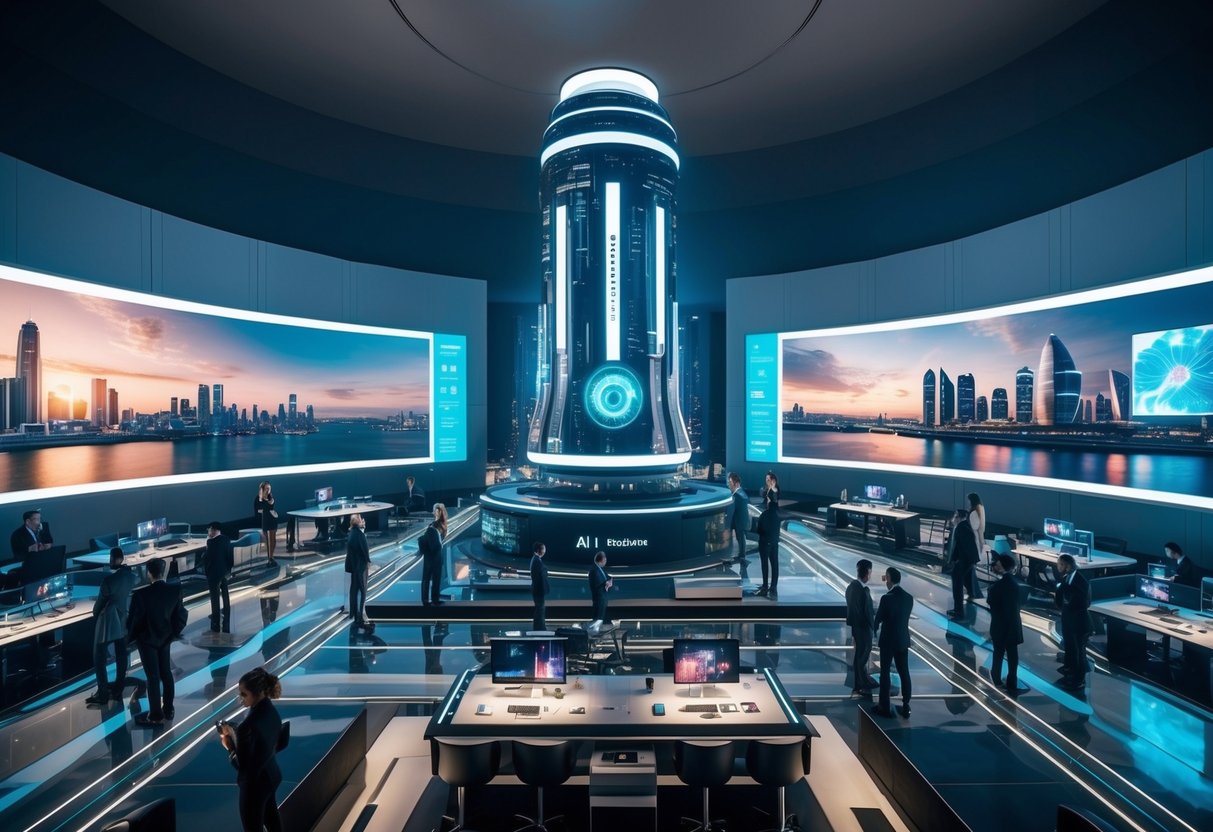
Reimagining Performance Art with AI
Artificial Intelligence is transforming performance art by creating new musical symphonies, soundscapes, and immersive experiences using virtual reality. AI’s capacity to generate unique performances offers innovative artistic expressions and opportunities for audience engagement.
Symphonies and Soundscapes
AI is creating a revolution in music composition and performance. Tools powered by machine learning analyze vast datasets of musical scores and performances to compose novel pieces. Algorithms can emulate traditional composers or produce entirely new forms of musical expression.
Innovative soundscapes are now possible through AI. Creators blend environmental sounds, music, and AI-generated elements to construct immersive auditory experiences. Performance artists leverage these AI-created compositions to enhance live shows, offering audiences experiences that are different from traditional performances.
This technology extends beyond composition. AI assists musicians during live performances by adapting to audience reactions in real-time. This dynamic interaction adds a layer of engagement, capturing the listener’s attention in ways that weren’t possible before.
Virtual Reality and Immersive Art
AI integrates seamlessly with virtual reality to transform performance art into a fully immersive experience. By adapting the environment in response to participant movements, AI can create experiences that are both interactive and personalized. It facilitates the designing of responsive virtual environments, adding depth to the art form.
Immersive performances make art more accessible. With VR headsets and AI-driven platforms, a global audience can experience these performances from anywhere. Interactive storytelling takes a central stage, where viewers become part of the narrative, shaping the unfolding story in real time.
These performances engage multiple senses, creating a holistic sensory experience. This has paved the way for new artistic collaborations, where technologists and artists unite to push the boundaries of creativity.
Influence of AI on Skill Development and Education
Artificial intelligence is reshaping the landscape of artistic skill development and educational curricula in creative fields. This transformation is powered by tools that enhance learning, offering artists new capabilities that redefine traditional boundaries.
Upgrading Artistic Skills with AI
AI-powered tools are equipping artists with innovative ways to refine their skills. Through real-time feedback, artists can explore various techniques and styles more efficiently. These tools offer guidance, suggesting improvements that might not be immediately apparent, thus expanding the artist’s range and precision.
Interactive platforms and applications provide hands-on experiences, bridging the gap between novice and expert. By automating tedious tasks, AI enables artists to focus on more creative aspects, fostering growth in skill mastery. This enhanced focus accelerates the learning process and enriches artistic expression.
As AI continues to evolve, it introduces new mediums and forms, such as generative art. Artists constantly find themselves at the intersection of technology and creativity, forced to adapt and grow. With each iteration, AI pushes the boundaries, requiring artists to engage in continual skill enhancement.
Evolving Curricula in Creative Academia
Educational institutions are progressively integrating AI into their programs to keep pace with industry changes. Curricula are being adapted to include instruction on AI tools, ensuring students are prepared for a technology-driven art world. This shift not only enriches learning but also equips graduates with relevant skills for modern creative careers.
AI is also facilitating personalized learning experiences. Adaptive learning platforms support students by providing custom-tailored educational paths, encouraging deeper exploration of artistic fields. These platforms adjust to individual learning curves, making arts education more individualized than ever before.
The synergy between AI and education is also influencing teaching methodologies. Instructors leverage AI to introduce dynamic teaching materials and novel forms of assessment. This collaborative approach seeks to create an engaging educational environment, preparing students for the future of creativity and innovation.